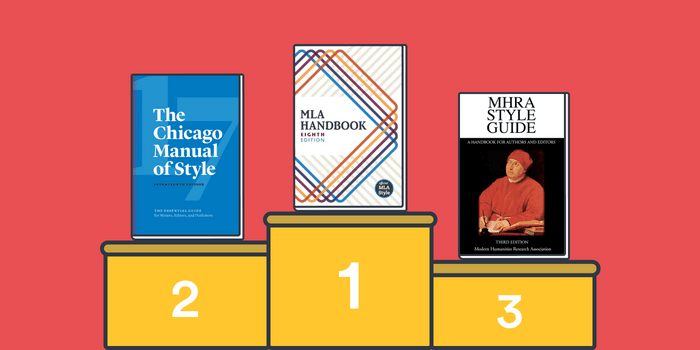
There are plenty of citation styles you can use for research papers but do you actually know which ones are used specifically in the history field? In order to ease your way into your paper, we compiled a list of the main citation styles used for history. Each style includes an explanation of its system, just like reference examples.
#1 MLA

The Modern Language Association style is known for being the most frequently used in the humanities, which includes history. It uses an author-page citation system, which consists of in-text citations formed by the author's last name and the page number of the source. These point to a reference list at the end of the paper.
Check out these MLA style resources
🌐 Official MLA style guidelines
MLA style examples
An in-text citation in MLA style:
However, research introduced a new perspective on history (Walke 224).
A bibliography entry in MLA style:
Walke, Anika. “‘To Speak for Those Who Cannot’: Masha Rol’nikaite on the Holocaust and Sexual Violence in German-Occupied Soviet Territories.” Jewish History, vol. 33, no. 1–2, 2020, pp. 215–244.
#2 Chicago

Chicago style is another form of citation used for history papers and journals. Its system offers two types of format: a notes and bibliography system, and an author-date system. The notes and bibliography system is mostly used for the humanities, whereas the author-date system is used in science and business. The latter is composed by in-text citations formed by the author's last name and date of publication that point to a reference list at the end of the paper.
Check out these Chicago style resources
🌐 Official Chicago style guidelines
Chicago style examples
An in-text citation in Chicago author-date style:
Clearly, an opposing view dominated the topic (Tuncay 2018).
A bibliography entry in Chicago author-date style:
Lima Navarro, Pedro de, and Cristina de Amorim Machado. 2020. “An Origin of Citations: Darwin’s Collaborators and Their Contributions to the Origin of Species.” Journal of the History of Biology 53 (1): 45–79.
#3 MHRA

The Modern Humanities Research Association style is a frequently used citation format for history papers. Its system has two format options, author-date or footnotes. The author-date system consists of in-text citations with the author's last name and date of publication, whereas footnotes give an in-text superscript number and a source reference at the end of the page. Both of these formats require a reference list at the end of the paper.
Check out these MHRA style resources
🌐 Official MHRA style guidelines
MHRA style examples
An in-text citation in MHRA author-date style:
The image of women in leading positions has evolved throughout time (Loomis 2010).
A bibliography entry in MHRA style:
Loomis, Catherine. 2010. The Death of Elizabeth I: Remembering and Reconstructing the Virgin Queen (Basingstoke, England: Palgrave Macmillan) https://doi.org/10.1057/9780230112131
#4 HIS

The Historical Journal citation style is one of the most popular journals about history. Its system differs from other citation styles, as it requires a full bibliographical reference at the first in-text citation, and then an author-short-title in subsequent citations. It also allows the use of footnotes; for a detailed description of its system take a look at the official HIS guidelines linked below.
Check out these HIS style resources
🌐 Official HIS style guidelines
HIS style examples
The first in-text bibliographical citation in HIS style:
As seen in journey of president Roosevelt, J. Lee Thompson, Theodore Roosevelt Abroad: Nature, Empire, and the Journey of an American President (2010) pp. 130-170.
Second and subsequent in-text references in HIS style:
For instance, president Roosevelt, Thompson, Theodore Roosevelt, pp. 132, showed to be an exemplary contemporary figure.
#5 History and Theory

History and Theory is an international journal devoted to the theory and philosophy of history. Its citation system consists of footnotes and in-text superscript numbers. For more details about its citation system refer to the journal's official guidelines linked below.
Check out these History and Theory style resources
🌐 Official History and Theory style guidelines
History and Theory style examples
An in-text citation in History and Theory style:
In colonial times, human skulls were a sign of conquer¹.
A footnote in History and Theory style:
¹ Ricardo Roque, Headhunting and Colonialism: Anthropology and the Circulation of Human Skulls in the Portuguese Empire, 1870–1930 (London: Palgrave Macmillan, 2010).
Frequently Asked Questions about citation styles used for history
🥈 What are the top 2 citation styles used for history papers?
The top 2 citation styles used for history papers are MLA and Chicago styles.
❇ What is the most simple way to make a reference list for history papers?
The easiest way to create a reference list for history papers is by using the BibGuru citation generator. This generator creates the fastest and most accurate citations possible, which will save you time and worries. The best part is, it is completely free!
⏭️ Should you use an author-date or a numeric citation style for history papers?
History papers may use citation styles with author-date systems, such as MHRA or Chicago. Alternatively, you can also use numeric citation styles which insert superscript numbers to indicate a source, like MHRA or History and Theory.
📜 What are the most prominent history journals?
Some of the most prominent history journals are: The American Historical Review, The Journal of Economic History, and History and Theory, among others.
🦶🏼 Can you add footnotes in history papers?
You can add footnotes to history papers as long as you use one of the following citations styles that allow the use of footnotes: History and Theory, The Historical Journal (HIS), and MHRA.


